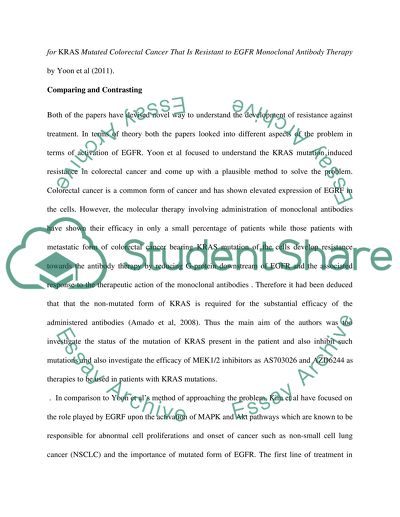Cite this document
(“Monoclonal antibodies to epidermal growth factor receptor (EGFR) such Coursework”, n.d.)
Monoclonal antibodies to epidermal growth factor receptor (EGFR) such Coursework. Retrieved from https://studentshare.org/medical-science/1673483-monoclonal-antibodies-to-epidermal-growth-factor-receptor-egfr-such-as-cetuximab-are-used-to-treat-solid-tumours-but-resistance-to-this-treatment-is-a-major-clinical-problem-it-is-essential-to-understand-the-mechanisms-supporting-the-various-forms-of
Monoclonal antibodies to epidermal growth factor receptor (EGFR) such Coursework. Retrieved from https://studentshare.org/medical-science/1673483-monoclonal-antibodies-to-epidermal-growth-factor-receptor-egfr-such-as-cetuximab-are-used-to-treat-solid-tumours-but-resistance-to-this-treatment-is-a-major-clinical-problem-it-is-essential-to-understand-the-mechanisms-supporting-the-various-forms-of
(Monoclonal Antibodies to Epidermal Growth Factor Receptor (EGFR) Such Coursework)
Monoclonal Antibodies to Epidermal Growth Factor Receptor (EGFR) Such Coursework. https://studentshare.org/medical-science/1673483-monoclonal-antibodies-to-epidermal-growth-factor-receptor-egfr-such-as-cetuximab-are-used-to-treat-solid-tumours-but-resistance-to-this-treatment-is-a-major-clinical-problem-it-is-essential-to-understand-the-mechanisms-supporting-the-various-forms-of.
Monoclonal Antibodies to Epidermal Growth Factor Receptor (EGFR) Such Coursework. https://studentshare.org/medical-science/1673483-monoclonal-antibodies-to-epidermal-growth-factor-receptor-egfr-such-as-cetuximab-are-used-to-treat-solid-tumours-but-resistance-to-this-treatment-is-a-major-clinical-problem-it-is-essential-to-understand-the-mechanisms-supporting-the-various-forms-of.
“Monoclonal Antibodies to Epidermal Growth Factor Receptor (EGFR) Such Coursework”, n.d. https://studentshare.org/medical-science/1673483-monoclonal-antibodies-to-epidermal-growth-factor-receptor-egfr-such-as-cetuximab-are-used-to-treat-solid-tumours-but-resistance-to-this-treatment-is-a-major-clinical-problem-it-is-essential-to-understand-the-mechanisms-supporting-the-various-forms-of.


